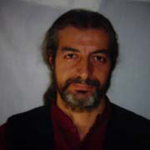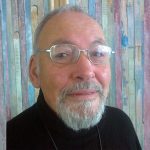Why do I love Dogen? A little difficult to say, as it comes down to feelings, replies Videha.

Several years ago I did a Zazen retreat in Taiwan. The centre where the retreat was held belongs to the Soto-Zen School, which means it’s in the tradition of Dogen. I feel a greater affinity with their practice than, for example, with that associated with Rinzai and the use of the koan.
Also, Osho’s discourses about Dogen have always touched me very deeply.
Dogen, whose name means ‘The Foundation of the Way’, was born in 1200, in Japan. Both parents died while he was still a child, and the death of his mother in particular, when Dogen was 7 years old, affected the course of his life. He came to know and understand, even at that age, the impermanence of all things.
From his novitiate at the age of 13, he was haunted by the question, “If all beings have the Buddha nature and are therefore inherently perfect, why then is effort necessary to arrive at awakening; to become aware of this Buddha nature?”
When he addressed this question to Zen master Eisai of Kenninji Temple, the latter replied, “No Buddha is aware of having Buddha nature, only the mediocre are aware of it.”
Immediately Dogen asked to be accepted as his disciple.
In 1223, after Eisai’s death, Dogen went to China in search of a true Zen master. After much searching, he came to master Ju-Ching, and after a few years with him achieved enlightenment.
Ju-Ching belonged to the Caodong School (Soto-Zen in Japanese) and this was the path Dogen brought to Japan. The main method of this school is called Shikantaza: to simply sit in meditation (Zazen) without doing anything.
Drop all thoughts about what is right and what is wrong, as well as the thought itself and the idea of enlightenment.
Drop all intentions – this is what is called no-mind. Do not sit in Zazen with the aim of attaining enlightenment.
Simply sit in meditation.
This is enlightenment.
Osho explains:
Meditation is not an achievement – it is already the case, it is your nature. It has not to be achieved; it has only to be recognized, it has only to be remembered. It is there waiting for you – just a turning in, and it is available. You have been carrying it always and always. Meditation is your intrinsic nature – it is you, it is your being, it has nothing to do with your doings. […]
Sit. Let thoughts settle themselves. Let mind drop on its own accord. You just sit gazing at the wall, in a silent corner, not doing anything at all. Relaxed. Loose. With no effort. Not going anywhere.
– Osho, Ancient Music in the Pines, Ch 7
This way is also known as the ‘Silent Enlightenment’. Osho speaks specifically about it, saying:
This small school of silent illumination is one of the highly evolved methodologies about awareness. […]
These people simply sit silently. They don’t do anything – good or bad. They simply don’t do anything. […]
They don’t even chant Buddha’s name. They simply sit silently. They don’t have any records because they don’t say anything. Their whole being is their statement. They are themselves buddhas. Why should they chant the name of Buddha, why should they worship Buddha, why should they go to the Buddha’s temple? […]
My own sympathy is with those ‘silent illumination’ Ch’an people. They are the very salt of the earth.
– Osho, The Great Zen Master Ta Hui, Ch 3
The goal of this path is to completely abandon body and mind, that is, to stop being identified with them.
For Dogen, practice and enlightenment are one. While we are sitting in meditation, enlightenment is already present, even if we are not aware of it. All that is necessary is to forget the self.
The one who is studying the self is the witness – your real self.
To study the self is to forget the self. To forget the self is to be enlightened by all things. […]
To be enlightened by all things is to remove the barriers between one’s self and others.
– Osho, Dogen, the Zen Master: A Search and a Fulfillment, Ch 1
Or as another Zen master, Keizan, says, “If you can clear the mind, you will find neither body nor mind, nor objects, nor a self that go along with them. This is why it is said that the body and mind have been dropped.”
When Dogen became enlightened, he went to Master Ju-Ching’s room and lit an incense stick.
“What is the reason for this incense stick?” asked Ju-Ching.
“I have let go of the body and mind,” replied Dogen.
“You have let go of the body and mind. The body and mind have been dropped,” replied Ju-Ching. Dogen prostrated himself at the Master’s feet in respect and gratitude.
“This means to even drop the letting go,” concluded Ju-Ching.
After his enlightenment, Dogen stayed in China for two more years before returning to Japan. Back in Japan in 1227, he was asked what he had learned in China and what he had brought with him.
Dogen replied, “Horizontal eyes, vertical nose. I came back empty-handed. No one can deceive me anymore… Time flows naturally.”
Dogen wrote a number of important texts that helped give great momentum to the spread of Zen. The most famous is called Shobogenzo: The Treasury of the True Dharma Eye. Another text is Instructions to the Cook or Tenzo Kyokun.
In Shobogenzo Dogen states,
Those who attain enlightenment are like the moon reflected in water. The moon does not get wet, and the water is not broken. Although its light is vast and boundless, it is reflected even in very little water; even the whole moon, the whole sky, is reflected in a dewdrop….”
Dogen introduced and initiated a great Zen tradition in Japan, known as Soto-Zen. He was and remains one of the Masters who contributed the most to the flourishing of Zen.
At the time of his death in Kyoto, in 1253, his last words were,
In the time of life, there is nothing but life. In the time of death, there is nothing but death.”
Based on (except where otherwise indicated):
Zen Master Keizan, Transmission of Light: Zen in the Art of Enlightenment, Shambhala
The Shambala Dictionary of Buddhism and Zen, Shambhala
Richard Bryan McDaniel, Zen Masters of Japan, Tuttle





Comments are closed.